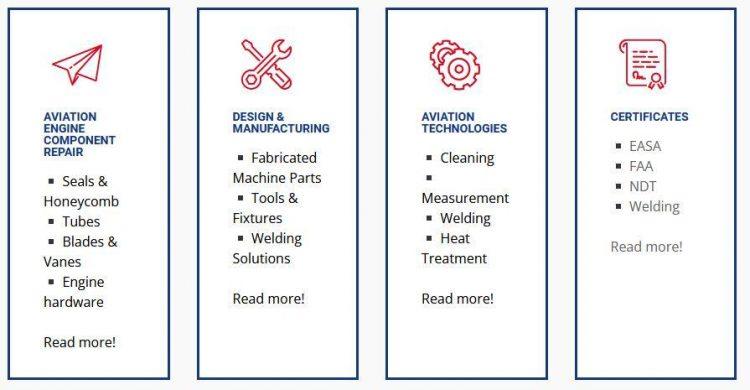Table of Contents
- Understanding the Basics of Domain Flipping and Its Potential for Profit
- Identifying Profitable Domains: Tips and Tools for Success
- Effective Marketing Strategies to Sell Your Domains Quickly
- Valuation Techniques: How to Determine the Worth of Your Domain
- Navigating Legal Considerations in Domain Flipping Transactions
- Q&A
- Final Thoughts
Understanding the Basics of Domain Flipping and Its Potential for Profit
Domain flipping involves purchasing domain names at a low cost and selling them at a higher price for profit. This practice has gained traction as an excellent way to make money online, especially for entrepreneurs looking to diversify their income streams. The key to successful domain flipping lies in understanding the market: identifying trends, keywords, and opportunities that can increase a domain’s value. By focusing on names that are short, memorable, and relevant to niche markets, flippers can position themselves advantageously.
To maximize profit, consider these critical factors when selecting domains:
- Keyword Relevance: Domains that contain popular keywords tend to attract more traffic and potential buyers.
- Extensibility: Opt for domain names that allow for brand growth or expansion.
- Market Trends: Stay updated on industry trends to tap into emerging opportunities.
- Domain Extension: Evaluate the impact of different extensions (e.g., .com, .net, .org) on value and desirability.
Additionally, some flippers choose to employ a strategic selling approach. This may include creating a simple landing page to showcase the domain’s potential or utilizing auctions and marketplaces to reach a wider audience. The following table illustrates various strategies and their potential effectiveness in selling a domain:
| Strategy | Effectiveness |
|---|---|
| Landing Page Creation | High – Attracts interested buyers |
| Domain Auctions | Medium – Competitive bidding can increase price |
| Marketplaces | Medium – Reaches a broad audience of potential buyers |
Successfully navigating the world of domain flipping requires patience, research, and a keen eye for valuable names. By leveraging market insights and employing effective sales strategies, individuals can turn seemingly simple domains into lucrative assets that contribute significantly to their online earnings.


Identifying Profitable Domains: Tips and Tools for Success
When diving into the world of domain flipping, one of the first and most crucial steps is to identify domains that hold potential for profitability. To do this effectively, research and analysis are key. Start by considering keyword-rich domains that are likely to attract traffic. Domains that include popular keywords or phrases can significantly enhance search visibility, thus making them more attractive to potential buyers. Utilize tools like Google Keyword Planner, Ahrefs, or Semrush to explore trending keywords in your niche.
Another effective strategy is to focus on the age and history of the domain. Older domains often carry more credibility and may have established backlinks, which can boost their authority in search engines. Use platforms such as Wayback Machine to explore the previous content and evaluate its relevance. Additionally, checking a domain’s traffic statistics using tools like SimilarWeb or Ubersuggest can provide insights into its past performance, helping you determine if it’s worth the investment.
consider the brandability of the domain. A great domain should be memorable, easy to spell, and flexible enough to allow for future growth. You can assess brandability by analyzing the potential for creating a unique identity through a name generator tool or brainstorming creative variations. To streamline this process, here’s a simple table to consider the important factors when selecting a domain:
| Factor | Explanation |
|---|---|
| Keyword Relevance | Ensure it includes popular search terms to attract organic traffic. |
| Domain Age | Older domains may carry trust and authority, benefiting SEO. |
| Backlink Profile | Check for existing backlinks that can provide SEO advantages. |
| Brandable | Assess ease of spelling, uniqueness, and memorability. |


Effective Marketing Strategies to Sell Your Domains Quickly
To successfully sell your domains quickly, it’s essential to adopt a multifaceted approach that combines online visibility and direct engagement with potential buyers. Start by creating a compelling landing page for each domain you wish to sell. This page should highlight the domain’s strengths, potential uses, and target audience. Use persuasive language to showcase the benefits of owning the domain, and make sure it features an easy-to-find contact form for inquiries. Remember, first impressions matter, so invest time in making your landing pages visually appealing and informative.
Utilizing social media platforms can dramatically increase your chances of a quick sale. Share your domains on sites like Twitter, Facebook, LinkedIn, and specialized forums where domain enthusiasts gather. Consider running targeted ads that can reach specific demographics interested in your domains. Engage with potential buyers by joining discussion groups and sharing your expertise. By presenting yourself as a knowledgeable resource, you can attract interested parties who may not initially be in the market for a domain but could be persuaded with the right approach.
Another powerful strategy is to leverage domain marketplaces. Place your domains on well-known platforms where buyers actively hunt for new domains. Ensure to set competitive prices and provide detailed descriptions that optimize your listings for search engines. A table showcasing your domains, their prices, and potential uses can be particularly effective. Here’s an example of how to structure this information:
| Domain Name | Price ($) | Potential Use |
|---|---|---|
| ExampleDomain1.com | 500 | E-commerce site |
| CreativeIdeas.net | 300 | Blog or portfolio |
| TechTrends.org | 450 | News & information |
By implementing these strategies, you’ll not only enhance your visibility to a broader audience but also establish credibility and increase the likelihood of securing quick sales on your domains.


Valuation Techniques: How to Determine the Worth of Your Domain
Determining the worth of your domain is a crucial step in the domain flipping process, as it directly impacts your potential profits. Several valuation techniques can help you assess a domain’s value accurately. First, consider the following key factors:
- Length: Shorter domains tend to be more valuable due to their memorability and ease of typing.
- Keyword Relevance: Domains containing popular keywords can attract higher traffic, making them more desirable.
- Extension: While .com domains are generally more valuable, other extensions like .net and .org can also hold significant worth depending on their application.
A comprehensive approach involves leveraging various tools and methodologies to gain insights into your domain’s market value. Using online platforms such as Estibot or GoDaddy’s valuation tool can provide you with a preliminary estimate. Additionally, a comparative market analysis can be beneficial. This involves examining domains recently sold within your niche, considering factors such as:
| Domain Name | Sale Price | Date Sold |
|---|---|---|
| example.com | $10,000 | Jan 2023 |
| sample.net | $5,500 | Feb 2023 |
| premium.org | $8,200 | Mar 2023 |
consider involving industry experts or domain appraisers who can provide professional evaluations based on their experience and market understanding. Engaging with online domain marketplaces and forums can also offer valuable insights into current trends and demand, helping you refine your pricing strategies accordingly. By adopting a well-rounded approach, you can ensure that you’re setting a competitive and realistic price for your domain, enhancing your profitability when flipping it in the dynamic online marketplace.


Navigating Legal Considerations in Domain Flipping Transactions
When engaging in domain flipping, understanding the legal landscape is crucial for ensuring smooth transactions and protecting your investments. Before you buy or sell a domain, familiarize yourself with laws surrounding trademark rights, intellectual property, and cybersquatting. A domain name that closely resembles a registered trademark can lead to legal complications and potential loss of your acquired asset. Always conduct thorough research to confirm that domain names do not infringe on existing trademarks.
Additionally, it’s important to jump into the terms and conditions set by domain registrars. Companies like GoDaddy and Namecheap have specific rules regarding domain transfers and sales that you must adhere to. Violating these terms can result in penalties or even the suspension of your domain. Always consult the registrar’s policy and consider drafting a domain purchase agreement to protect both parties in a sale. This could include payment terms, post-sale responsibilities, and what to do if there are disputes.
Lastly, be mindful of potential tax implications from your flipping activities. Depending on your jurisdiction, the income from domain sales may be classified as ordinary income or capital gains, influencing your tax liabilities. Keeping accurate records of your purchases, sales, and any associated costs will help streamline the tax reporting process. Here’s a simplified table showcasing a common method used in tracking domains:
| Domain Name | Purchase Price | Sale Price | Profit/Loss |
|---|---|---|---|
| exampledomain1.com | $50 | $200 | +$150 |
| exampledomain2.com | $75 | $60 | -$15 |
| exampledomain3.com | $30 | $100 | +$70 |
Q&A
Q&A: Domain Flipping to Make Money Online
What is domain flipping?
Domain flipping is the process of buying domain names at a low price and then selling them for a profit. This can involve registering an available domain, improving its value with strategic branding or marketing, and then reselling it to interested buyers or companies.How much money can I make from domain flipping?
The profit margins in domain flipping can vary significantly. Some flippers may sell domains for a few dollars, while others may sell premium domains for thousands or even millions of dollars. Your potential earnings largely depend on the quality of the domain, the demand for specific keywords, and your ability to market it effectively.What types of domains are the most profitable?
Premium domains—those that are short, easy to remember, and contain popular keywords—tend to be the most profitable. Additionally, domains that are relevant to trending industries or emerging technologies can also provide lucrative opportunities. It’s important to conduct thorough research to identify niches that are gaining traction.How do I find good domain names to flip?
You can find good domain names through various methods:- Keyword Research: Use tools to discover popular keywords in your niche.
- Expired Domains: Look for expired domain names that may still have traffic or backlinks.
- Domain Auctions: Participate in auctions where existing domains are sold, often at competitive prices.
- Brandable Domains: Consider domains that could easily serve as a brand name in various industries.
What steps should I take to sell a domain?
- Register the Domain: Ensure the domain is registered in your name.
- Build a Landing Page: A simple landing page showcasing the domain can entice potential buyers.
- List on Marketplace: Use established domain marketplaces like GoDaddy, Flippa, or Sedo to list your domain.
- Reach Out Directly: If your domain is relevant to a specific business, consider reaching out directly to them with an offer.
Do I need technical skills to succeed in domain flipping?
While having technical skills can be beneficial, they are not a requirement for domain flipping. Understanding basic domain management, SEO, and marketing principles can help you make more informed decisions and improve your chances of flipping domains successfully. Many successful flippers started with limited technical knowledge but learned as they went.What are the risks involved in domain flipping?
Like any investment, domain flipping carries risks. You might purchase a domain that doesn’t sell, leading to a financial loss. Additionally, there’s the potential for market fluctuations—domains that are valuable today may lose their appeal tomorrow. Conduct thorough research and only invest what you can afford to lose.How long does it take to see profits from domain flipping?
The timeframe for making a profit in domain flipping can vary. Some sellers may flip a domain within a few weeks, while others may hold onto a domain for several months or even years before finding the right buyer. Patience and persistence are crucial in this business.Are there any legal considerations I should be aware of?
Yes, there are several legal aspects to consider in domain flipping:- Trademark Issues: Ensure that the domains you are buying and selling do not infringe on existing trademarks.
- Domain Laws: Familiarize yourself with domain registration laws and the policies of the registrars you use.
- Disputes: Be prepared for potential disputes over domain rights, especially if a domain is similar to a well-known brand.
What is the best way to start domain flipping?
The best way to start is by researching the domain market and investing in a few promising domains. Educate yourself on the latest trends, join domain flipping communities, and network with other flippers. Start small, keep track of your investments and sales, and gradually expand your portfolio as you gain experience.This Q&A aims to provide a comprehensive overview of domain flipping for those interested in making money online. Happy flipping!

